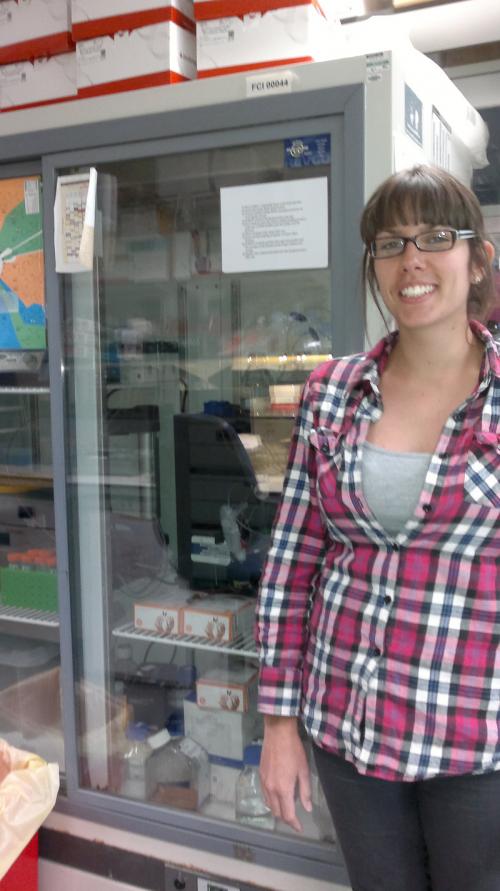
Helen Walden published first paper since joining MRC-PPU
Helen Walden's lab studies the molecular mechanisms that control attachment of ubiquitin (a protein tag or signal) to its targets. Attachment requires the sequential action of 3 enzymes, E1, E2 and E3. E2s and E3s interact with each other to allow the final step of transfer to target. The problem is that there are ~40 E2s and ~600 RING-type E3s in the human genome, which gives rise to thousands of possible E2-E3 pairs. Yet there are pathways in which the E2-E3 pair is exclusive and the basis of this exclusivity/specificity is poorly understood on a molecular level.
The Walden lab uses the Fanconi Anemia (FA) DNA repair pathway as a model for understanding specific ubiquitination events. FANCL (an E3) and Ube2T (an E2) team up to stick one molecule of ubiquitin onto the target FANCD2. If this attachment does not occur, Fanconi Anemia develops. FA is a rare but deadly childhood disorder that results in genomic instability, bone marrow failure, and a high predisposition to cancer. FANCL is not known to function with E2s other than Ube2T, and Ube2T has not yet been found to function physiologically with other E3s. Therefore Charlotte Hodson, a recent PhD student in the Walden lab, determined the high-resolution crystal structure of FANCL in complex with Ube2T, and discovered that in addition to the interface commonly seen between E2s and E3s, there are a number of extra interactions that make this pairing specific, in particular a key charge-charge interaction that we find is required for FANCL/Ube2T function.
The resulting paper contains data generated at the London Research Institute of Cancer Research UK and at the MRC Protein Phosphorylation and Ubiquitylation Unit, and has just been published in Structure - click here to view.
The Walden lab uses the Fanconi Anemia (FA) DNA repair pathway as a model for understanding specific ubiquitination events. FANCL (an E3) and Ube2T (an E2) team up to stick one molecule of ubiquitin onto the target FANCD2. If this attachment does not occur, Fanconi Anemia develops. FA is a rare but deadly childhood disorder that results in genomic instability, bone marrow failure, and a high predisposition to cancer. FANCL is not known to function with E2s other than Ube2T, and Ube2T has not yet been found to function physiologically with other E3s. Therefore Charlotte Hodson, a recent PhD student in the Walden lab, determined the high-resolution crystal structure of FANCL in complex with Ube2T, and discovered that in addition to the interface commonly seen between E2s and E3s, there are a number of extra interactions that make this pairing specific, in particular a key charge-charge interaction that we find is required for FANCL/Ube2T function.
The resulting paper contains data generated at the London Research Institute of Cancer Research UK and at the MRC Protein Phosphorylation and Ubiquitylation Unit, and has just been published in Structure - click here to view.

